Who’s voting?
In the previous blog post at joeisdone, I explain why VBM analysis in 2020 is more accurately done using total voter turnout of 2016 as a comparison point.
Today, we will take a deeper dive at the demographics of who’s voting. North Carolina publishes excellent detailed demographic crosstabs on who’s requested a ballot with columns such as race, ethnicity, age, gender, party affiliation, and county. This allows us to deduce with whom the enthusiasm gap is.
If you haven’t read the original article here, do so now before reading this page. The TL;DR is that a majority of Democrats are expected to VBM and a majority of Republicans are expected to vote on Election Day.
All numbers here must be read with the filter that Democrats ideally need about 3x the turnout of Republicans in VBM terms. In that sense, Democrats are underperforming in every demographic except maybe the under-65’s.
Summary
Most notable is that there are strong signs that the overperformance with Democrats is partially an artifact of Simpson’s Paradox. In short, the Democrats have a registration edge with the 65+ compared with the under-65, and yet have been found to be staunch Republican voters in exit polls.
When you have mostly 65+ people signing up for VBM, and these mostly 65+ people are mostly Democratic even though they tend to vote for Republicans, this means that the Democratic VBM edge is disproportionately composed of crossover voters.
Also notable is that the enthusiasm gap with Black voters is very real.
The biggest area of caution is around independent voters. In 2016, the independent voters broke for Trump. However, since 2016, North Carolina has gone through population growth, and the newly registered voters tend to be unaffiliated. Hence, a strong recommendation to the Trump team is to focus on reaching out to transplants.

Who are the independents?
Updated with its own section; see Who are the independents
Recommendations for Team Trump
- Understand independents - Understand who the new independents are better and reach out to them.
- Understand the white overperformance with Biden - White Democrats, for the most part, are carrying Biden. Some of this is from the elderly, but some of this may be from the so-called “professional class.”
- Keep leaning into strengths. - Biden has a communication shortcoming with the Black voters in general. Consider strengthening ground game efforts.
- Understand the elderly better. - The shortcoming with the elderly can be explained partially with Simpson’s Paradox, but not fully. Work hard to close with the elderly, especially the independent affliated elderly.
The dirty data
Party baselines
All baselines are taken as a percentage of their respective turnout in 2016.
First, we consider current VBM ballot requests as a percentage of 2016 turnout. Across all groups, that stands at 18.65%. In reality, only about 80% of ballots will get returned if historical Florida data is to be believed.
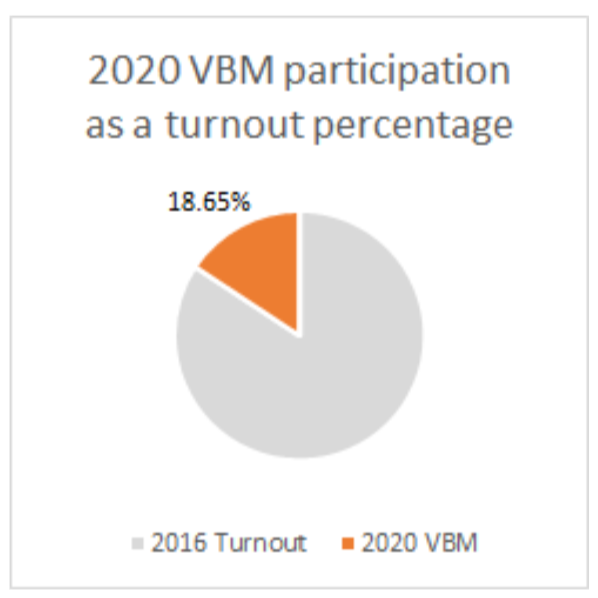
Second, we consider party makeup within VBM ballots - how the VBM ballots are split among Republicans, Democrats, and Independents. The Democrats have a commanding edge here, as expected.
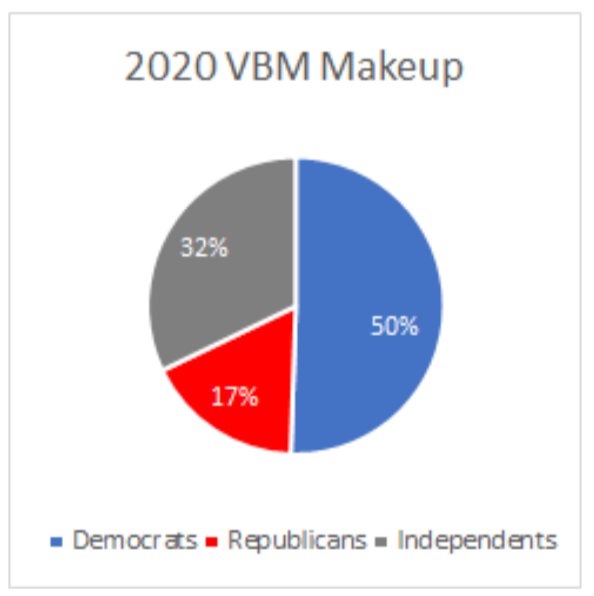
Breaking each party down by turnout as a percentage of 2016 clarifies exactly which party is outperforming and what party is underperforming as well.
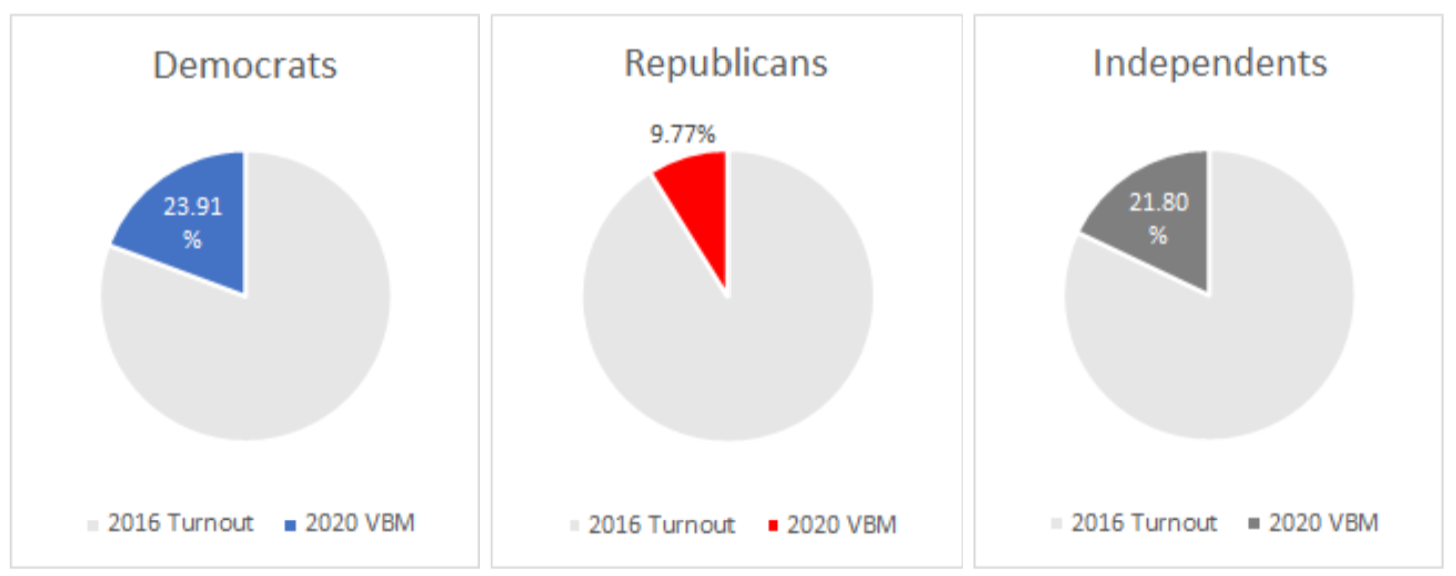
Per the above figure, Democrats VBM ballot requests currently stand at 23.91% of their total turnout - again, this is expected since Democrats have declared a majority preference to vote by mail, while Republicans declare a majority preference to vote on Election Day.
With these in mind, we dive into the crosstabs.
Age
We start out with the worst news for Trump. People aged 65 and over are by far the biggest outperformers for VBM, presumably due to COVID-19 disproportionately affecting that demographic.
Across the board, a full 34% of the elderly are participating in VBM as a percentage of 2016 turnout. These elderly are majority Democrat, which is unusual in a demographic that is traditionally Republican. This seemingly portends to a genuine weakness for Trump.
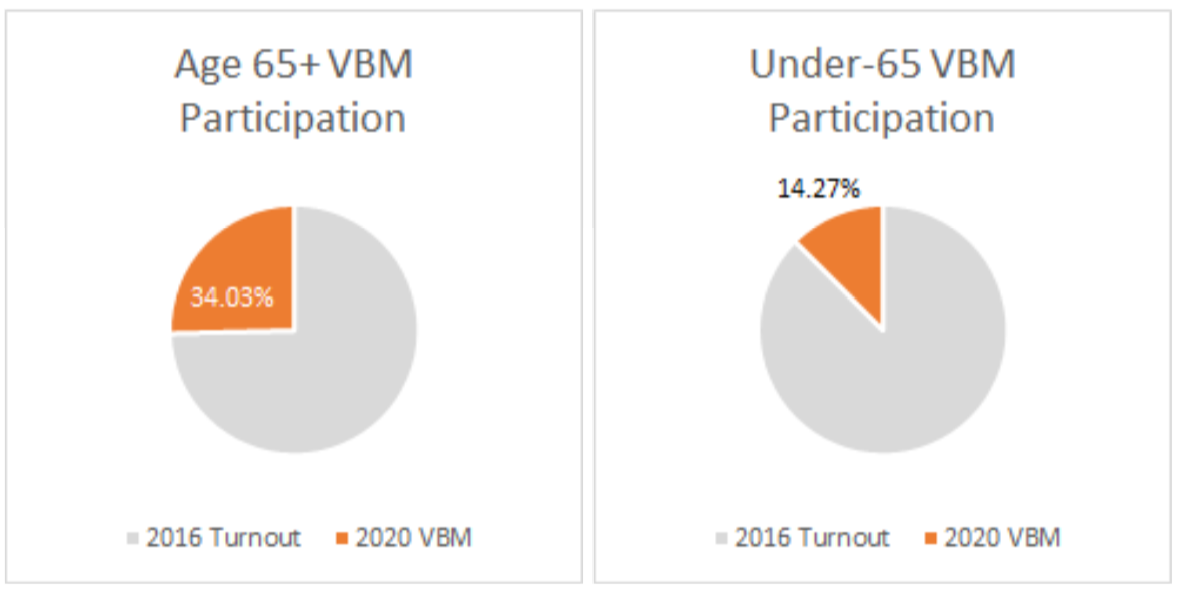
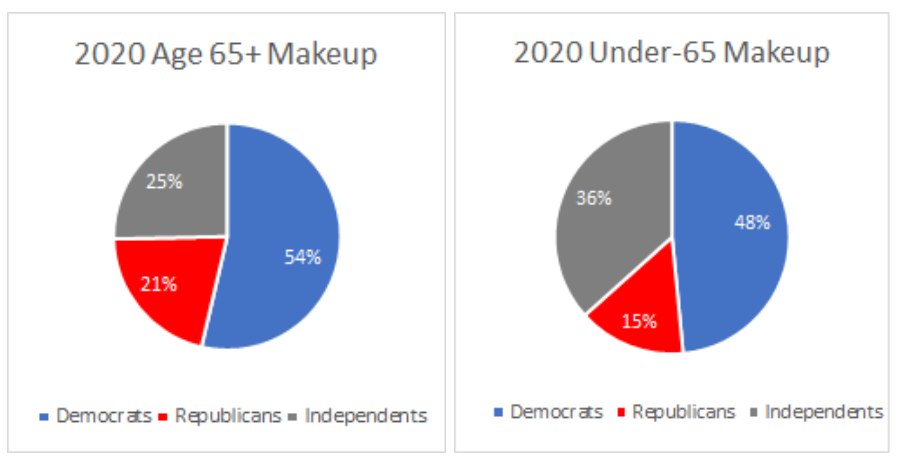
On the other hand, we are seeing an underperformance among Republicans in the under-65 age group. However, Democrats also appear to be underperforming in this group as well.
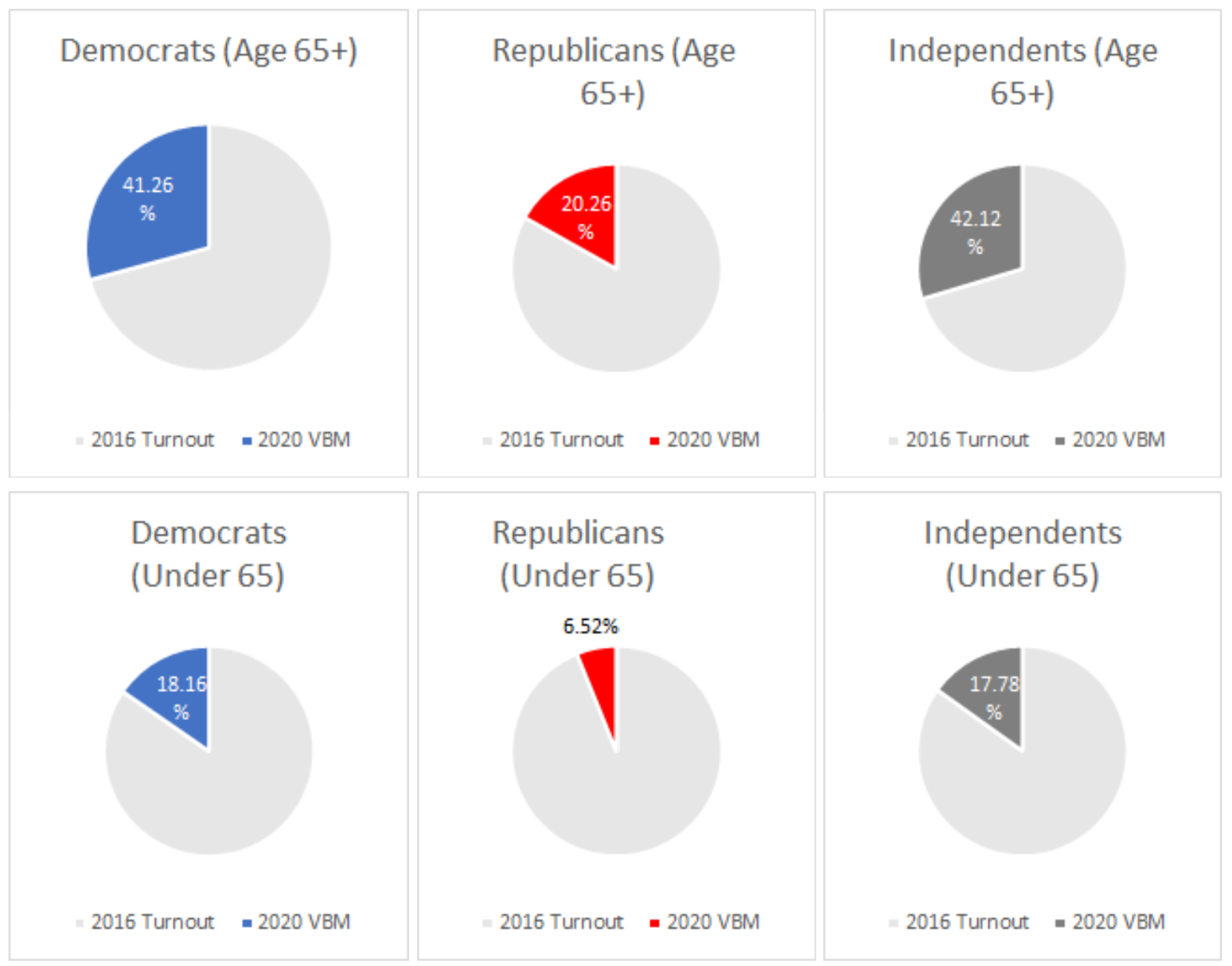
This is an effect of Simpson’s Paradox, because the majority of “crossover” votes have been speculated to be within older Democrats that never changed their party registration. Compared against the percentages of elderly voters in 2016, independents stand out as the far and away winner, while Republicans are strongly outperforming among under-65’s.

Holy Crosstabs, Batman
I leave another crosstabs for white voters by age, party, and year.
These show that:
- Trump VBM performance is weakest among under-65 Republicans (as is expected).
- Democratic over-performance is partially an artifact of Simpson’s Paradox and is minimized when analyzed by age.
- Independents carry their strength among under-65s.
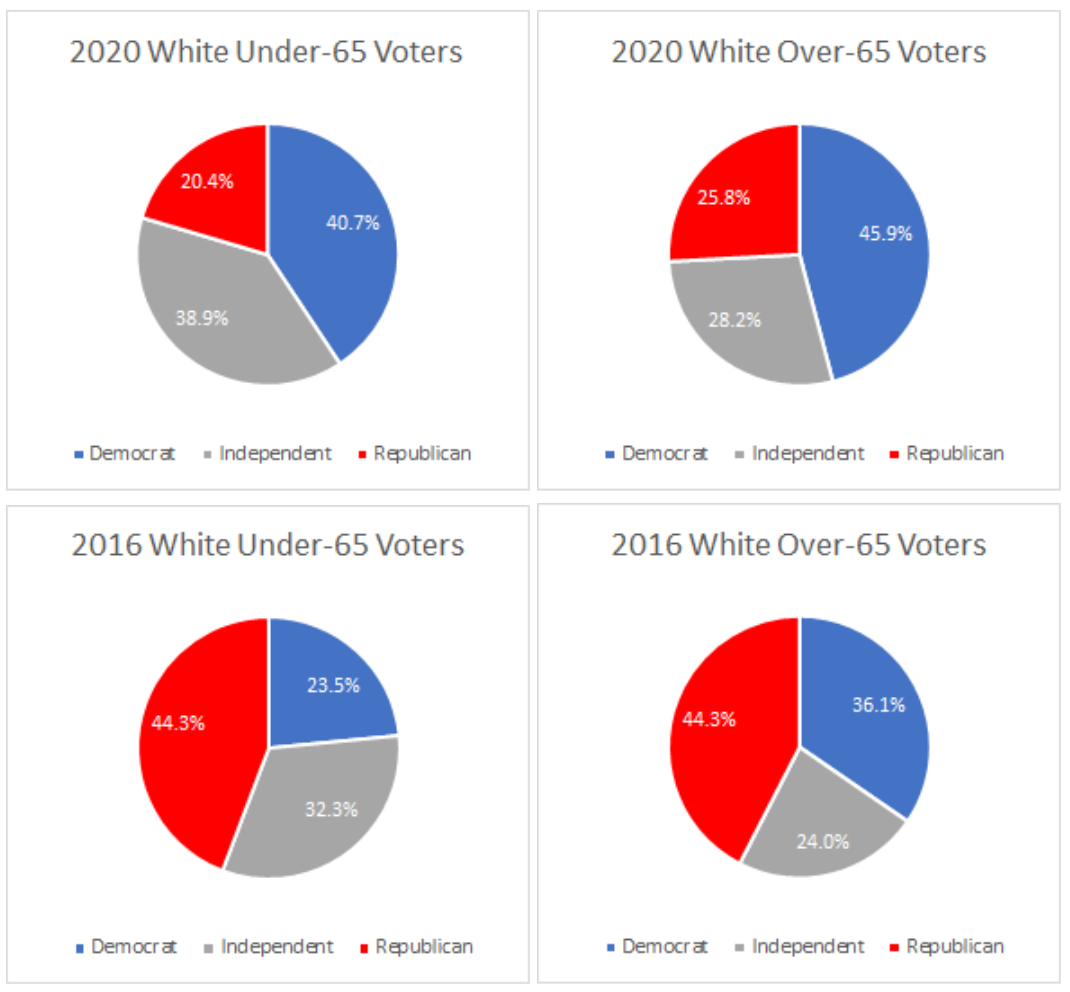
Race
In perhaps the most troubling sign for Democrats, Black voters are under-performing white voters when it comes to VBM registration. Given that Black voters are so heavily Democrat, and given that VBM sign-ups are disproportionately Democratic, this portends to a severe communication gap. Black voters should be closer to 30% of their 2016 turnout at this point in time.

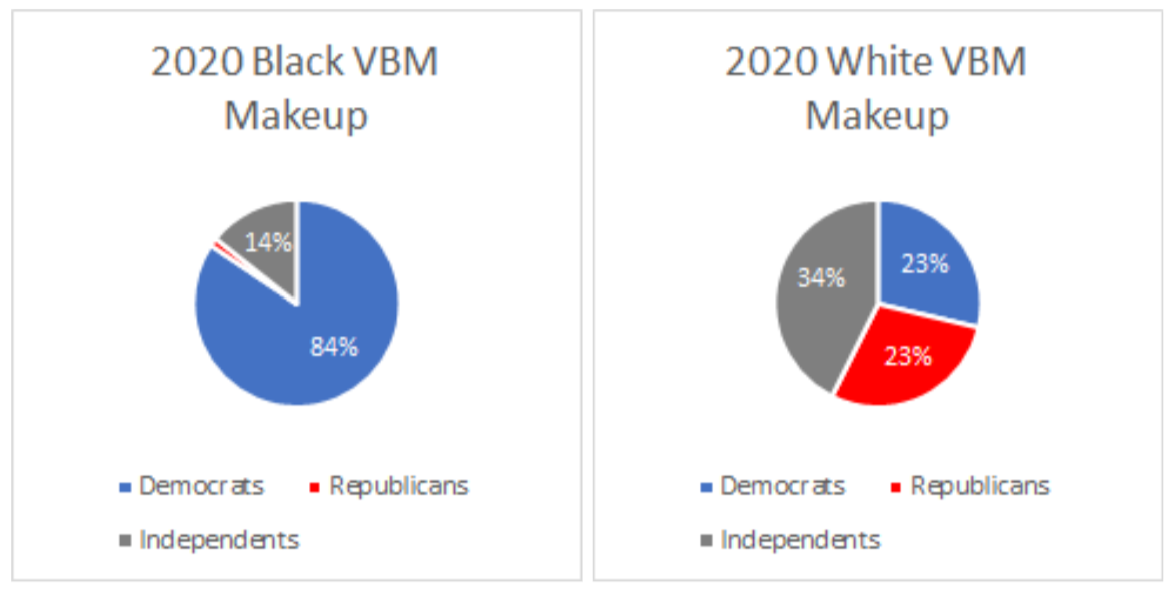
As the graphs below show, white Democrats are performing exceptionally well in VBM turnout compared to their Black counterparts.
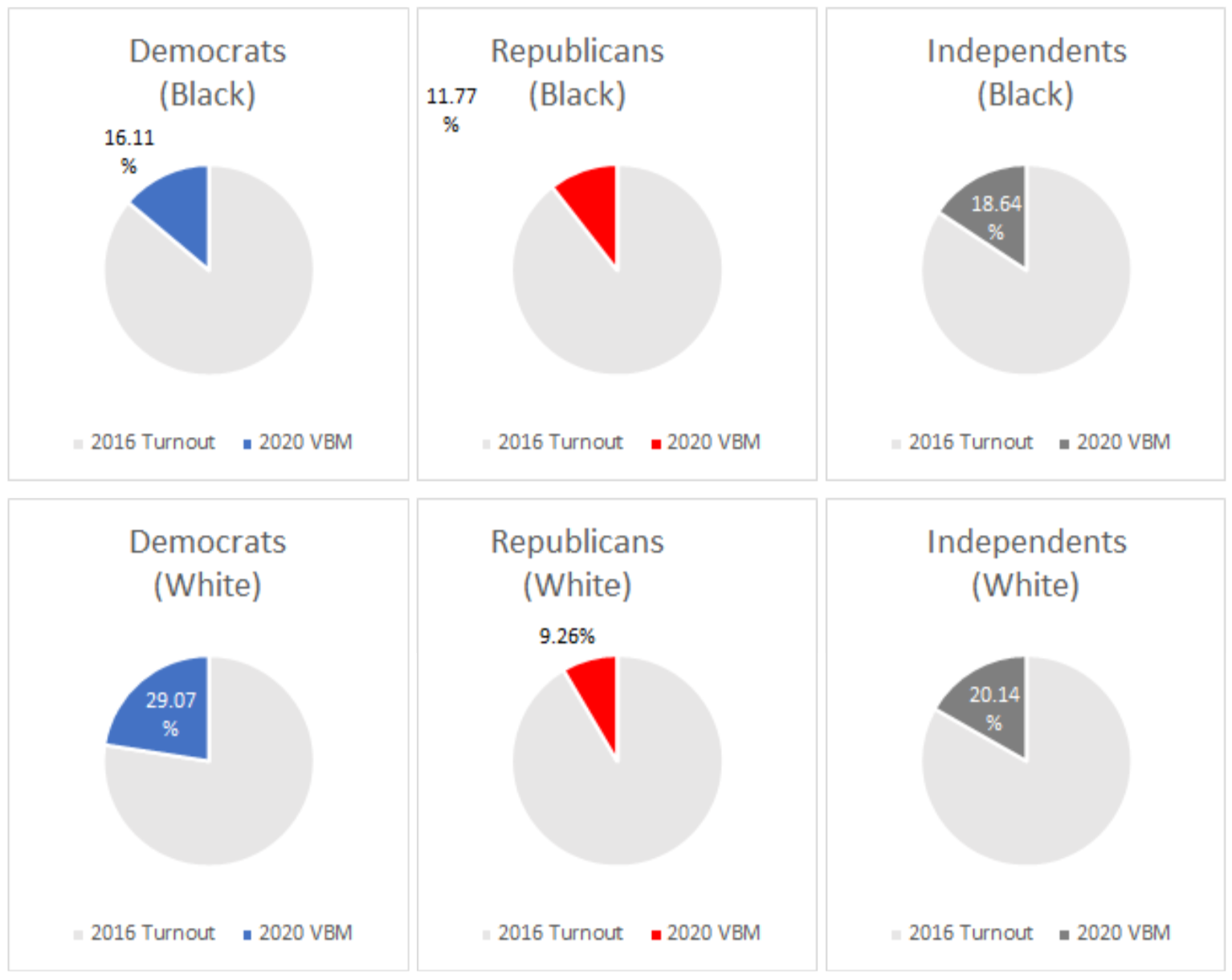
What should be particularly concerning for Biden is that Black independents are competitive with white independents, and Black republicans are outperforming white Republicans. So the split is not related to race per se - but rather Democrats are not able to make inroads with getting Black people to sign up for VBM, for whatever reason.
Gender
In 2016, females made up 55% of absentee voters and 54.36% of overall voters. In 2020 thus far, the percentage is little changed at 54.78%. Females have a slight performance advantage compared to males.
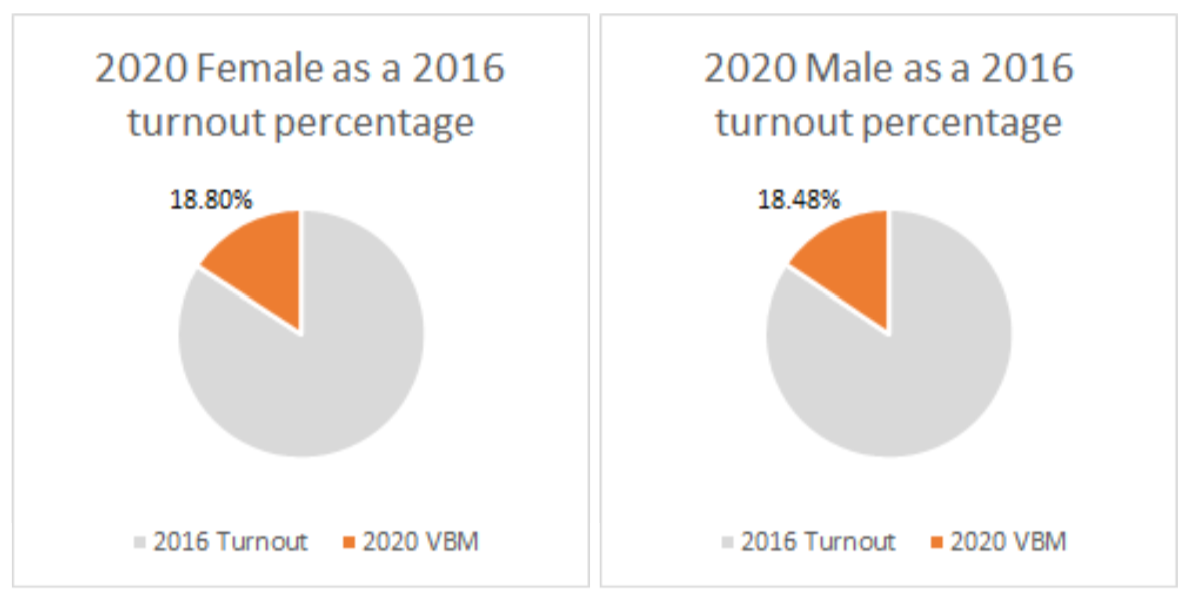
The female versus male breakdown reflects party registration trends.
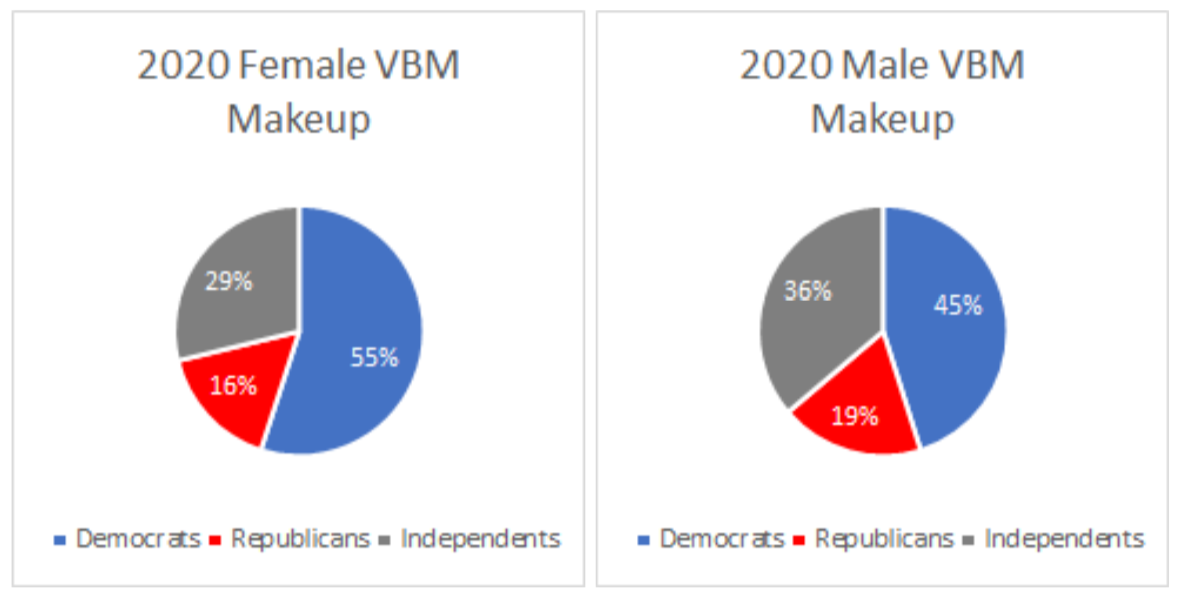
One surprising statistic is that Democratic and independent men are outperforming their respective female counterparts, and Republicans the opposite. This may point to a gender gap that will be narrower than it was in 2016.
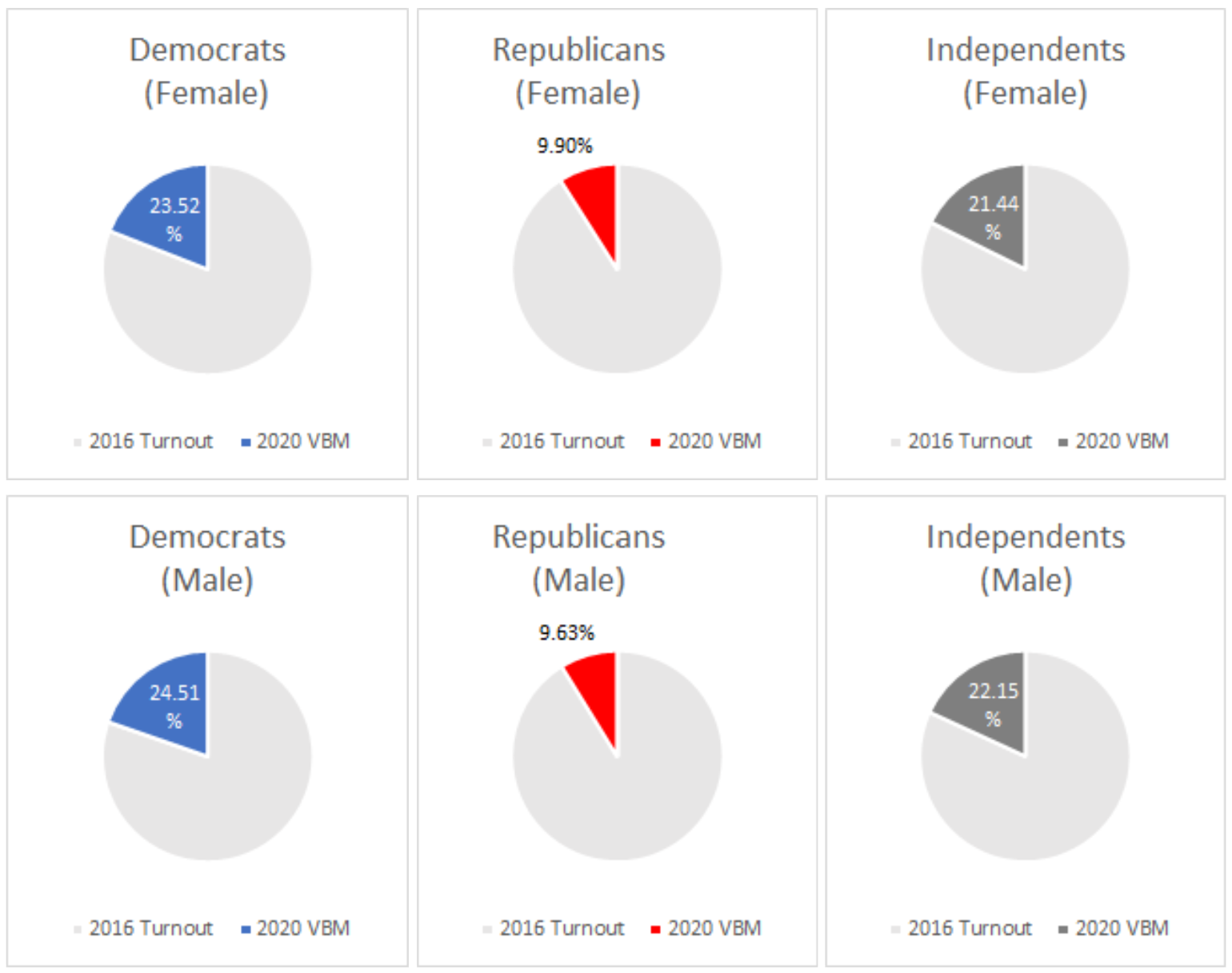
Ethnicity
Hispanics seem to favor VBM across the board.
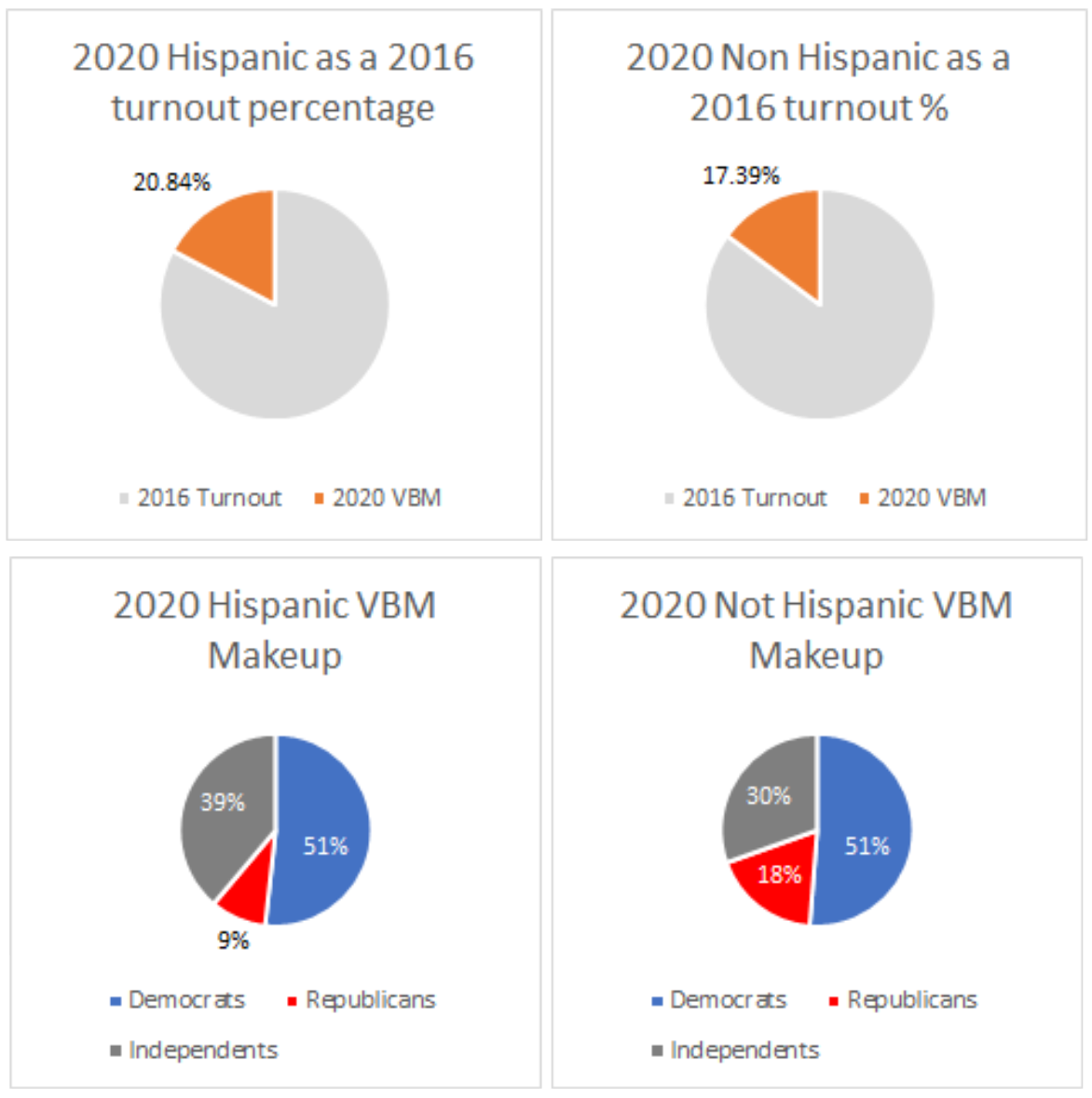
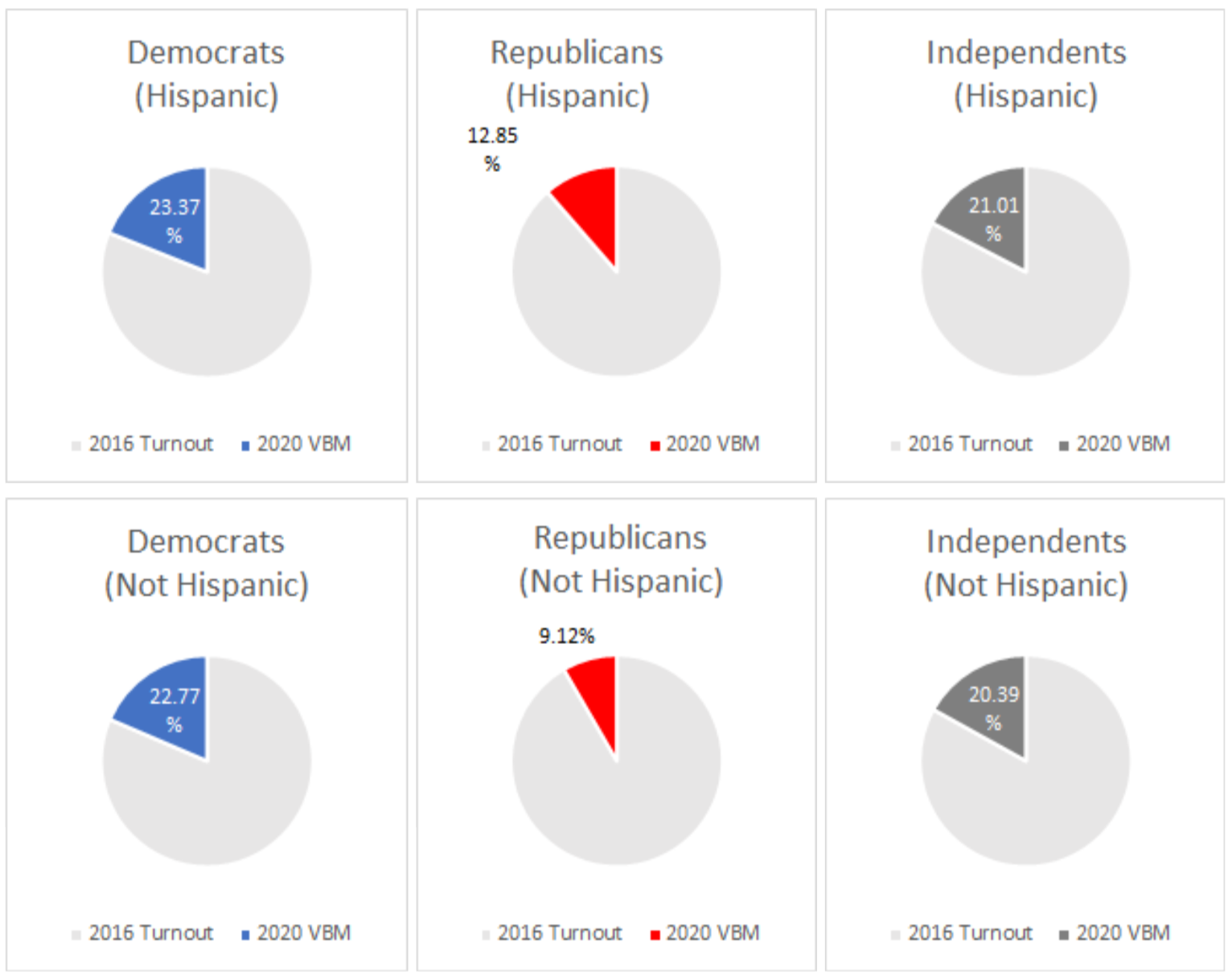
Overall, there does not appear to be an ideological split among the Hispanics; they simply seem to do better across the board. The edge does appear to be stronger among Republican and Independent Hispanics.